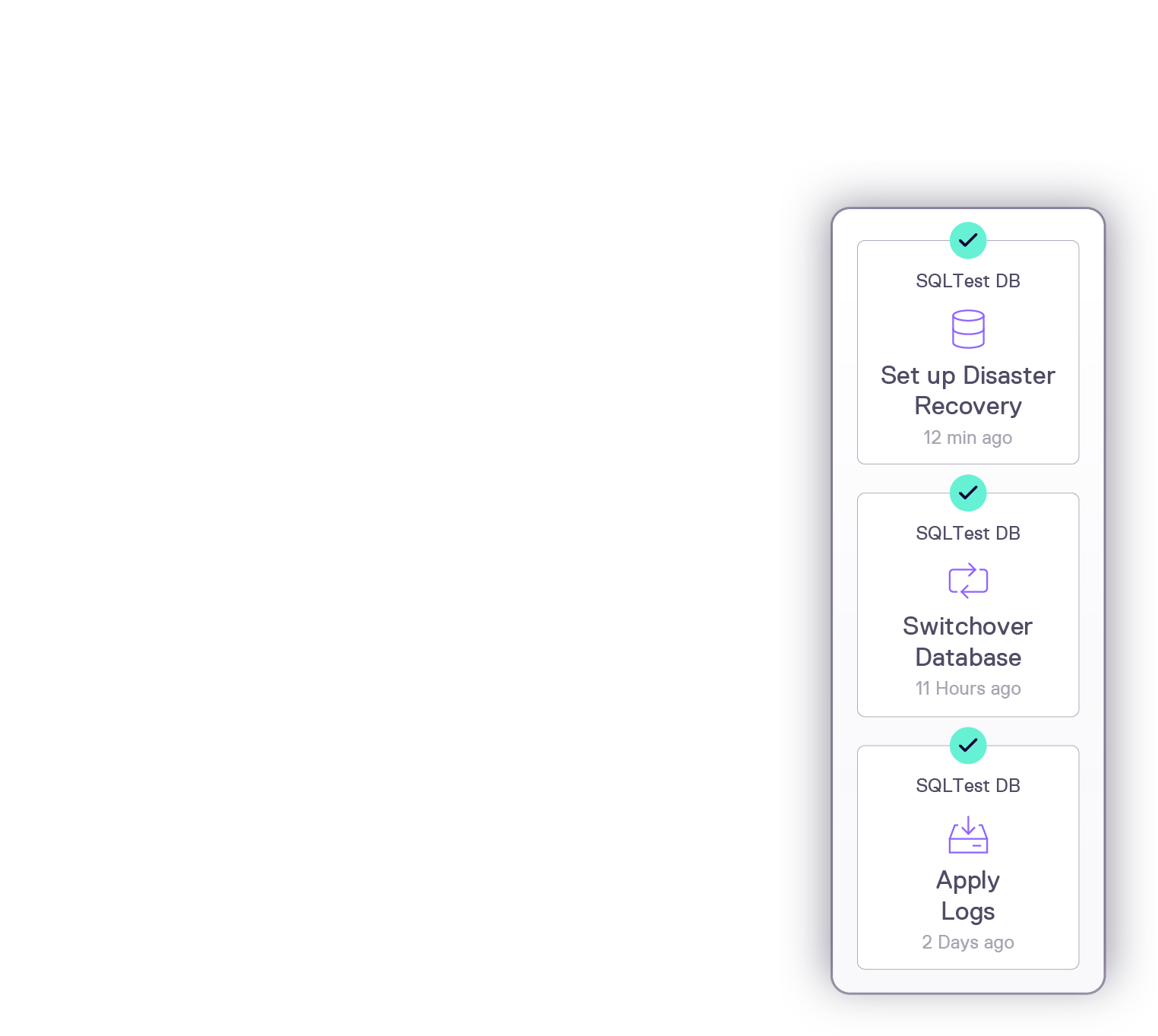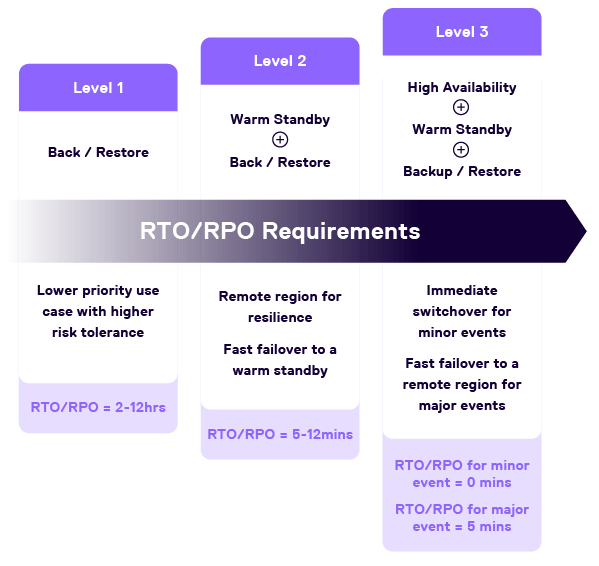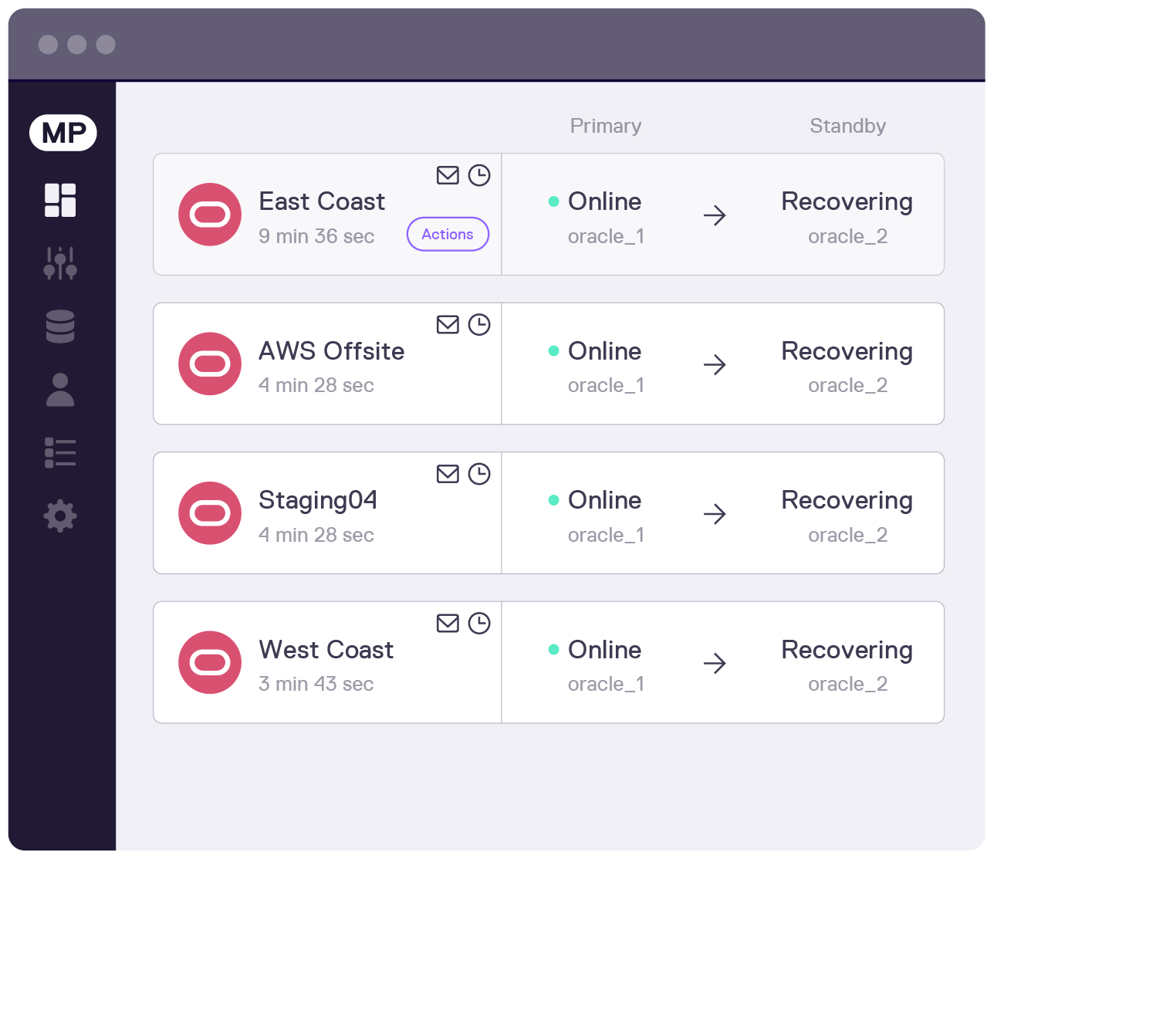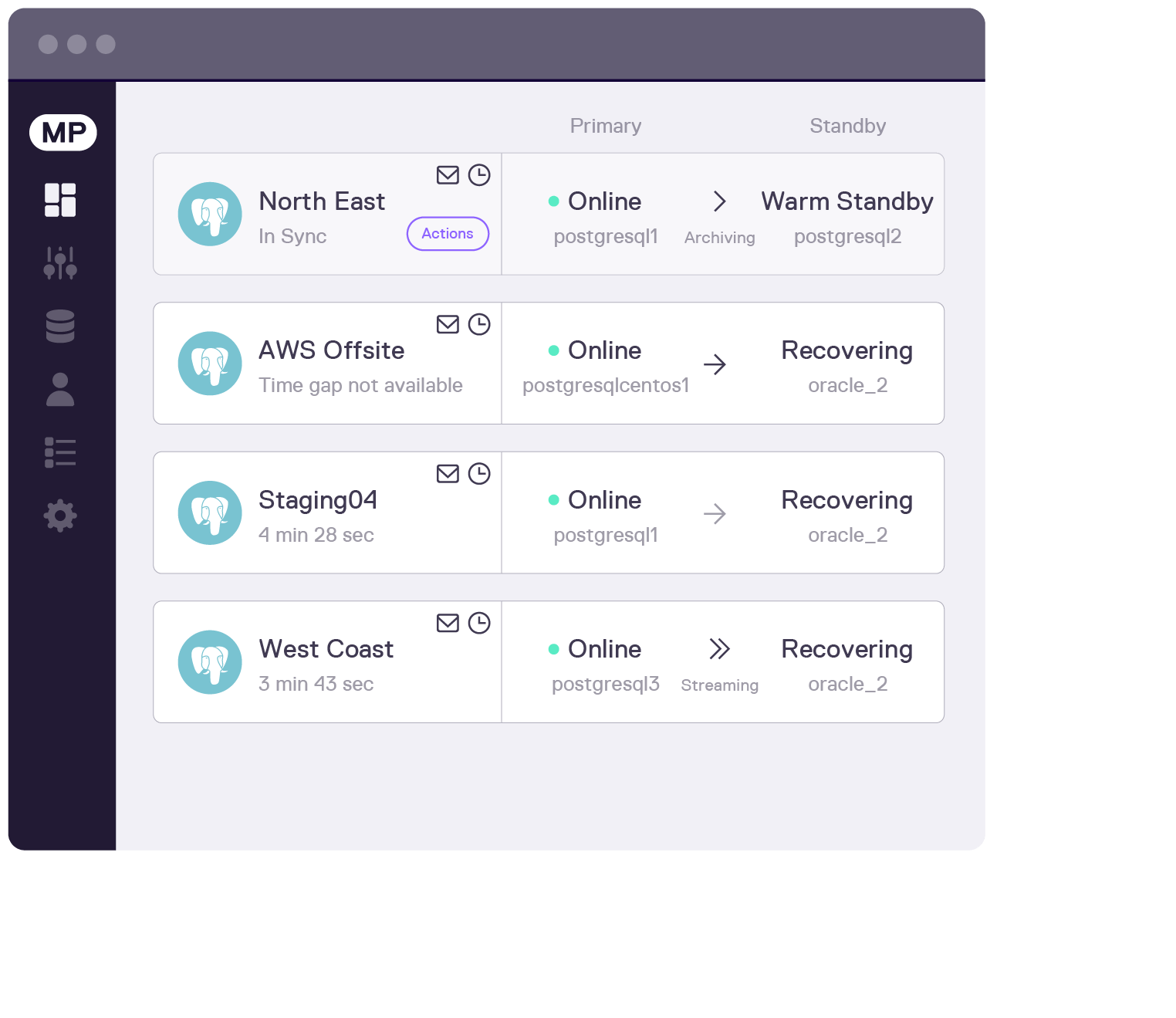StandbyMP for the Cloud
Every cloud needs Disaster Recovery
No cloud is immune to downtime, and most people are less protected than they think. As part of your cloud migration, it is essential to deploy Disaster Recovery that meets your RTO/RPO needs.
StandbyMP software for the cloud guarantees database continuity with a continually verified standby database that is always available and ready to take over at a moment's notice.

Easily implement best practice DR in the cloud with StandbyMP
Cloud services are numerous, varied, and often shrouded in the type of ‘marketing speak’ that makes getting to the ‘technical truth’ challenging. When planning your migration, careful consideration, you must carefully evaluate your RPO/RTO requirements and then ensure that your cloud architecture can match these requirements across all disaster types.
Standby MultiPlatform allows you to quickly, easily and cost-effectively implement resilient Disaster Recovery in the cloud for your Oracle and Microsoft SQL Server databases.

Dispelling the Common Cloud Myths
Not all clouds are equal and not every cloud has a silver lining. There are some commonly believed myths that you need to understand and dispel.
I'm in the cloud so I don't need Disaster Recovery
Cloud infrastructure providers typically don't include resilient Disaster Recovery. Instead, they recommend you implement out-of-region DR for business-critical databases.
Clouds are more reliable than on-premise
Moving to a Cloud Service Provider (CSP) doesn’t magically fix availability problems. The cloud is also vulnerable to downtime, accessibility issues, and performance problems.
My data is protected because I have backups
While backups are a necessary part of any Disaster Recovery plan, traditional backups no longer meet the data loss (RPO) and recovery speed (RTO) requirements of most businesses. Backups are also difficult to test and vulnerable to corruption.
Clouds are more reliable than on-premise
Moving to a Cloud Service Provider (CSP) doesn’t magically fix availability problems. The cloud is also vulnerable to downtime, accessibility issues, and performance issues.
The cloud is not immune from disasters.
With so much of your organization’s business value tied up in its data, it is critical that this data be backed up and protected. Backups, while important, cannot provide the RTOs and RPOs required by modern enterprises. While multiple availability zones improve reliance in cloud environments, they do not provide the necessary protection for environments with short RTO/RPO. As a result, multi-regional standby databases are critical to meeting organizational needs, and third-party software solutions are the best way to supplement existing cloud stacks.

What approach is recommended by Cloud Service Providers (CSPs)?
When looking at database availability in the cloud, CSPs such as Amazon and Oracle recommend out-of-region replication as the basis of best-practice Disaster Recovery. Organizations then match the type of replication to their RTO and RPO requirements.
As evidenced by Amazon's six-hour regional failure in 2021, in-region high availability is not enough by itself. A resilient warm standby database is the cornerstone of best practice Disaster Recovery.

Easily implement best practice DR with Standby MultiPlatform
Standby MultiPlatform allows you to quickly, easily and cost-effectively implement resilient Disaster Recovery in the cloud for your Oracle and Microsoft SQL Server databases.
Cloud DR for Oracle SE
Like Oracle Data Guard, StandbyMP uses physical replication technology to create a standby database that is continuously updated, verified and available for failover at any time.
- Eliminate risk with a resilient and remote standby database that can meet RTO and RPO requirements across all disasters.
- Simplify DR with auto-failover, one-click resynchronization, and DR testing.
- Facilitate patching and testing with zero data loss planned switchovers.
- Full Oracle technology support.


Cloud DR for SQL Server
Go beyond Availability Groups and Log Shipping with StandbyMP - the Gold Standard for Disaster Recovery.
- Remove complexity and risk by managing your Disaster Recovery from one central console.
- Speed up with multi-database actions, guided workflows, and one-click actions.
- Simplify with intelligent standby creation, automated failover, and user replication.
- Facilitate patching and testing with zero-data-loss planned switchovers, read-only access and more.
- Eliminate risk with standardised workflows and maintenance actions.
- Automatically set up your standby across versions 10+ and OS.
Cloud DR for PostgreSQL
Disaster Recovery on PostgreSQL can be complex, time-consuming, and subject to human error. StandbyMP software simplifies, automates and de-risks standby creation and management to ensure you are always protected.
- Achieve enhanced functionality with one-click, multi-cluster actions for standby management.
- Simplify DR with a user-friendly Ul with fast workflows.
- Eliminate risk with standardised workflows and maintenance actions.
- Automatically set up your standby across versions 10+ and OS.




White Paper
Key considerations when migrating to the cloud
Learn what Cloud Service Providers (and Dbvisit) recommend to ensure database continuity.
StandbyMP's benefits for the cloud
Fast implementation
Implement StandbyMP in just a few hours, not days or weeks.
Guaranteed integrity
Guarantee protection with a continuously updated standby database.
Multi-threat resilience
Easily perform 'Graceful Switchovers' to facilitate patching or testing.
Minimal data loss
Protect your data with real-time replication and seamless failover capabilities.
Rapid recovery
Get up and running fast through automatic failover and one-click resynchronization.
Out-of-region
Implement out-of-region standby databases to guarantee availability




.png?width=860&name=Oracle%20Webinar%20thumbnail_updated%20(3).png)





.png?width=860&name=Oracle%20Webinar%20thumbnail_updated%20(1).png)
.png?width=860&name=Oracle%20Webinar%20thumbnail_updated%20(2).png)
.png?width=860&name=Oracle%20Webinar%20thumbnail_updated%20(4).png)
